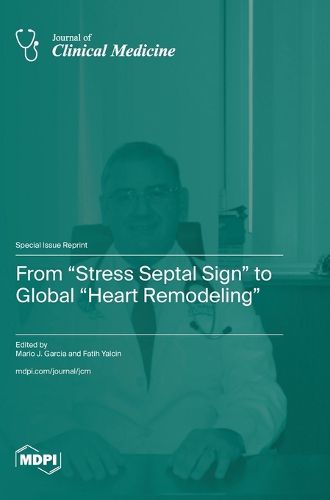Readings Newsletter
Become a Readings Member to make your shopping experience even easier.
Sign in or sign up for free!
You’re not far away from qualifying for FREE standard shipping within Australia
You’ve qualified for FREE standard shipping within Australia
The cart is loading…






This title is printed to order. This book may have been self-published. If so, we cannot guarantee the quality of the content. In the main most books will have gone through the editing process however some may not. We therefore suggest that you be aware of this before ordering this book. If in doubt check either the author or publisher’s details as we are unable to accept any returns unless they are faulty. Please contact us if you have any questions.
Despite advancements in real-time 3D segmental analysis at the Cleveland Clinic and animal validation studies via third-generation microscopic ultrasound at Johns Hopkins, as well as microscopic remodeling using comparisons of human and animal data at UCSF over two decades, the prevalence and role of LV segmental remodeling and early imaging biomarkers under daily hemodynamic stress remain unclear. Echocardiographers usually prefer single cross-sectional measurements for heart tissue. While basal septal hypertrophy is regular in animals, high stress scores with emotional stress lead to irregularity with tissue heterogeneity (stressed heart morphology, SHM) in humans. Superposed stressors in SHM are adrenergic overdrive, cognitive disorders, and chronic or exercise hypertension, leading to increased mortality. Hemodynamic fluctuations due to blood pressure variability in multiple stressors can be lethal, and enormous SHM may exist in chronic high-stress conditions. Basal septal dominancy or SHM could pre-exist chronically before Takotsubo episodes. SHM should be included in clinical protocols to monitor future acute episodes due to hypertension, the main cause of recurrent Takotsubo episodes. An approach to antihypertensive treatment and stress management with comprehensive diagnostic tests is needed. Recording SHM in clinical practice globally could provide a more comprehensive evaluation. Beyond the clinical aspects of SHM, there is a need to focus on cellular levels of myocardial tissue to investigate whether SHM is the specific location of Selye's nonspecific general adaptive response to stressors.
$9.00 standard shipping within Australia
FREE standard shipping within Australia for orders over $100.00
Express & International shipping calculated at checkout
This title is printed to order. This book may have been self-published. If so, we cannot guarantee the quality of the content. In the main most books will have gone through the editing process however some may not. We therefore suggest that you be aware of this before ordering this book. If in doubt check either the author or publisher’s details as we are unable to accept any returns unless they are faulty. Please contact us if you have any questions.
Despite advancements in real-time 3D segmental analysis at the Cleveland Clinic and animal validation studies via third-generation microscopic ultrasound at Johns Hopkins, as well as microscopic remodeling using comparisons of human and animal data at UCSF over two decades, the prevalence and role of LV segmental remodeling and early imaging biomarkers under daily hemodynamic stress remain unclear. Echocardiographers usually prefer single cross-sectional measurements for heart tissue. While basal septal hypertrophy is regular in animals, high stress scores with emotional stress lead to irregularity with tissue heterogeneity (stressed heart morphology, SHM) in humans. Superposed stressors in SHM are adrenergic overdrive, cognitive disorders, and chronic or exercise hypertension, leading to increased mortality. Hemodynamic fluctuations due to blood pressure variability in multiple stressors can be lethal, and enormous SHM may exist in chronic high-stress conditions. Basal septal dominancy or SHM could pre-exist chronically before Takotsubo episodes. SHM should be included in clinical protocols to monitor future acute episodes due to hypertension, the main cause of recurrent Takotsubo episodes. An approach to antihypertensive treatment and stress management with comprehensive diagnostic tests is needed. Recording SHM in clinical practice globally could provide a more comprehensive evaluation. Beyond the clinical aspects of SHM, there is a need to focus on cellular levels of myocardial tissue to investigate whether SHM is the specific location of Selye's nonspecific general adaptive response to stressors.